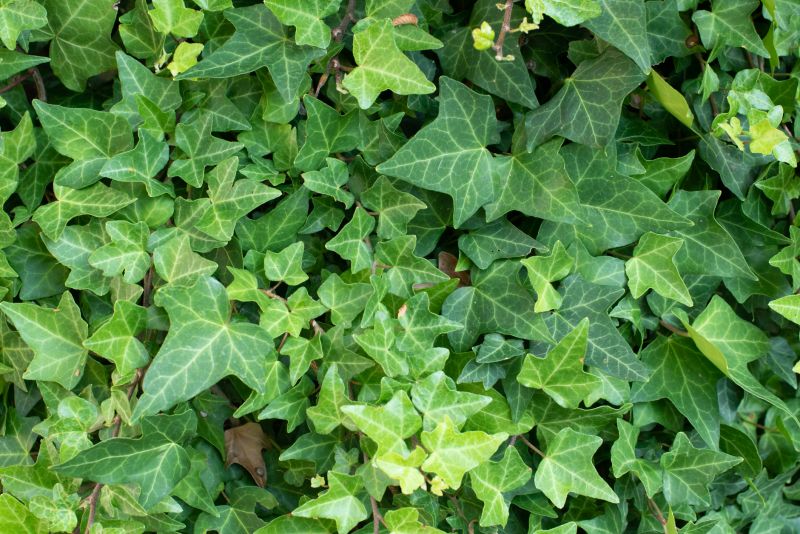Expert Picks for English Ivy Removal Tools and Solutions
Find trusted recommendations on the most effective products to tackle English ivy and maintain a pristine outdoor space.
 Removing English ivy from surfaces and structures can be a challenging task that requires appropriate tools and products. The process often involves selecting the right type of removal product based on the surface material, the extent of the ivy growth, and the desired method of removal. Chemical herbicides, mechanical tools, and natural remedies are commonly used options, each with its own advantages and considerations. When choosing a product, it is important to consider safety, effectiveness, and ease of application to ensure a successful removal process.
Removing English ivy from surfaces and structures can be a challenging task that requires appropriate tools and products. The process often involves selecting the right type of removal product based on the surface material, the extent of the ivy growth, and the desired method of removal. Chemical herbicides, mechanical tools, and natural remedies are commonly used options, each with its own advantages and considerations. When choosing a product, it is important to consider safety, effectiveness, and ease of application to ensure a successful removal process.
Top Overall Option
Herbicide-based Ivy Removal Solution
A well-formulated herbicide designed specifically for invasive plant control can be an effective choice for English ivy removal. This type of product typically features active ingredients that penetrate the plant's tissues, helping to suppress regrowth when applied correctly. Its ease of use and targeted action make it a popular option for both professionals and homeowners seeking a reliable method to manage ivy infestations. Proper application, combined with protective gear and adherence to instructions, can enhance results and facilitate long-term control.
Types of Products For English Ivy Removals
Herbicide Sprays
Chemical sprays formulated to target and kill invasive ivy plants effectively when applied directly to the foliage.
Glyphosate-based Products
Herbicides containing glyphosate that are commonly used for broad-spectrum plant control, including ivy.
Vine and Root Killers
Specialized solutions designed to penetrate vine structures and reach the roots for comprehensive removal.
Organic Herbicides
Natural formulations that aim to control ivy without synthetic chemicals, often requiring multiple applications.
Mechanical Pruners and Shears
Tools used for physically cutting and removing ivy from surfaces and structures.
Power Shears and Trimmers
Motorized tools designed for quick and efficient cutting of dense ivy growth.
Digging and Excavation Tools
Shovels, hoes, and other tools for removing root systems from the ground.
Mulching and Barrier Products
Materials used to prevent regrowth after removal by blocking sunlight and growth.
Herbicide Gel Formulations
Gel-based herbicides that can be applied directly to cut stems for targeted control.
Steam or Heat Treatment Devices
Equipment that uses heat to kill ivy without chemicals, suitable for small infestations.
Popular Choices
Widely used for their convenience and effectiveness in targeting ivy foliage directly.
Commonly chosen for their broad application and proven performance in plant control.
Preferred for their ability to reach the roots and prevent regrowth.
Growing in popularity among those seeking chemical-free options.
Essential tools for manual removal, especially for smaller or accessible areas.
Favored for tackling dense and extensive ivy growth quickly.
Effective for removing root systems in stubborn infestations.
Used to suppress future growth after removal efforts.
Popular for precise application on cut stems to prevent regrowth.
Increasingly used for chemical-free removal, especially in small areas.
For those seeking a more efficient approach, specialized herbicide formulations designed to target invasive plants like English ivy are popular. These products typically contain active ingredients that penetrate the plant's tissues, helping to kill the ivy at the root level. Mechanical options such as pruning shears, loppers, or even power tools can be effective for smaller infestations or for removing ivy from hard surfaces. Additionally, natural or organic remedies may be suitable for those wanting to avoid chemical use, although they might require more time and repeated applications.
Proper application techniques and timing are crucial to maximize effectiveness and minimize damage to surrounding plants or surfaces. Protective gear, such as gloves and eye protection, should always be used when handling chemical products. It is also advisable to follow the manufacturer's instructions carefully, including recommended weather conditions and application intervals. Regular maintenance and monitoring after initial removal can help prevent regrowth and ensure the area remains clear of ivy in the long term.
Key Buying Considerations
- Surface Compatibility: Ensure the product is suitable for the surface material, whether wood, brick, or metal.
- Application Method: Decide between liquid sprays, gels, or mechanical tools based on infestation size and location.
- Safety Precautions: Use protective gear and follow instructions to minimize risk during application.
- Effectiveness: Consider products with active ingredients proven to target invasive plants like ivy.
- Ease of Use: Choose products that match your experience level and comfort with application techniques.
- Time to Results: Be aware that some methods may require multiple applications over time.
- Environmental Impact: Avoid products that may harm surrounding plants or structures if that is a concern.
- Cost and Budget: Balance the effectiveness with affordability to select a suitable option.
- Regrowth Prevention: Look for products or methods that help prevent ivy from regrowing after removal.
- Environmental Conditions: Consider weather conditions such as rain or wind that could affect application success.
- Long-term Control: Evaluate if the product provides ongoing suppression or requires repeated use.
- Surface Sensitivity: Some surfaces may be more vulnerable to chemical damage; choose accordingly.
- Residue and Cleanup: Consider how easy it is to clean up after application and any residual effects.
- Regulatory Compliance: Ensure the product complies with local regulations and usage guidelines.
- Compatibility with Other Treatments: Check if the product can be used alongside other garden or surface treatments.
